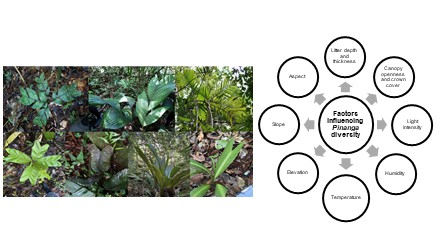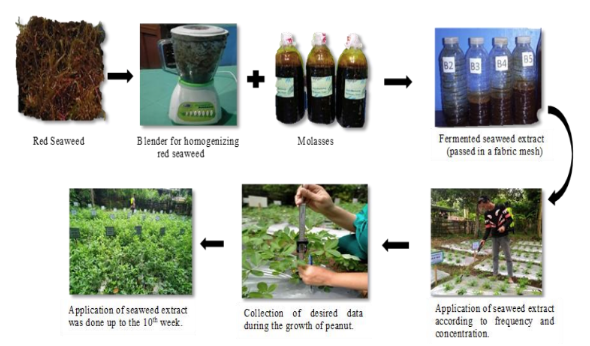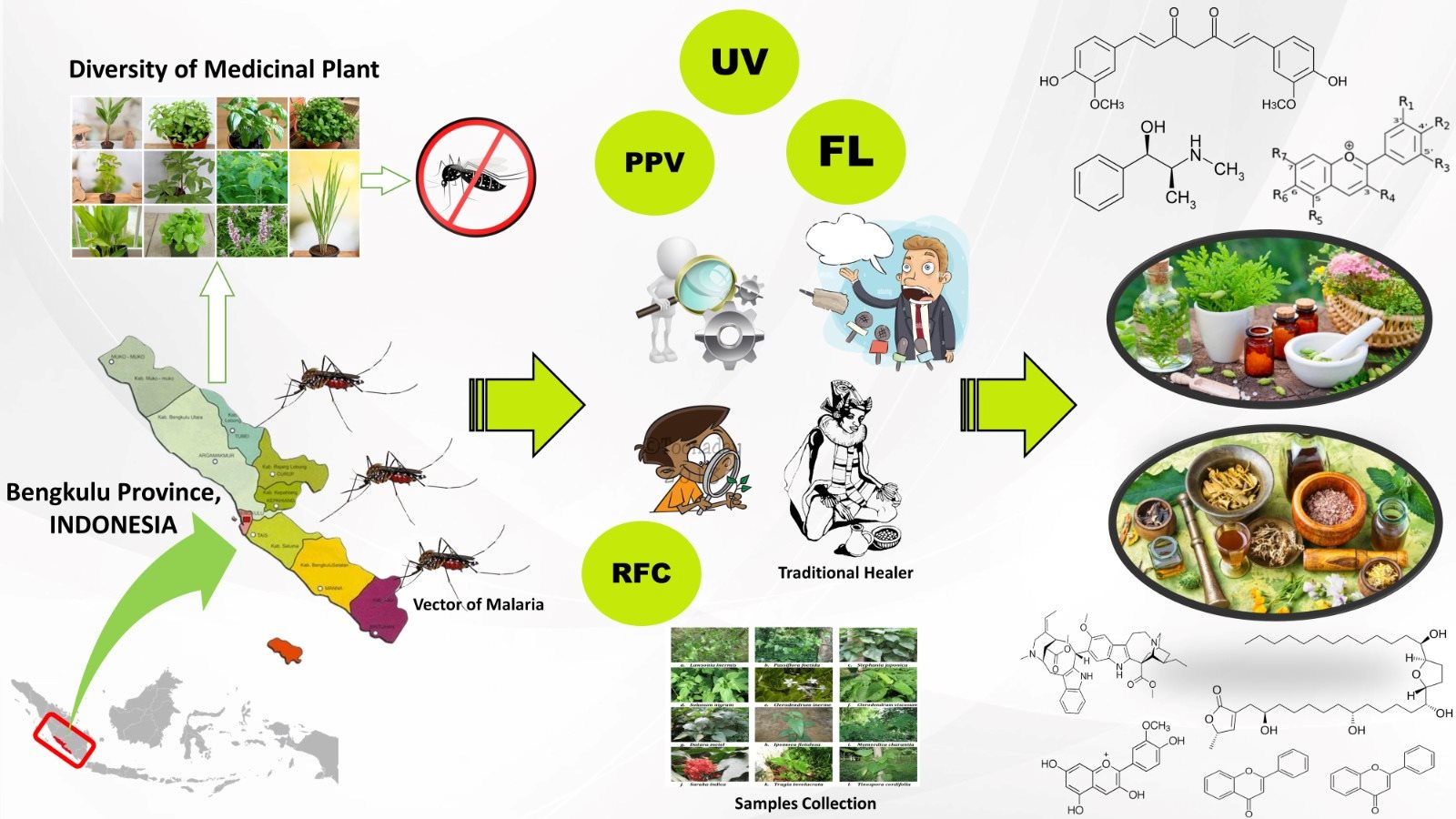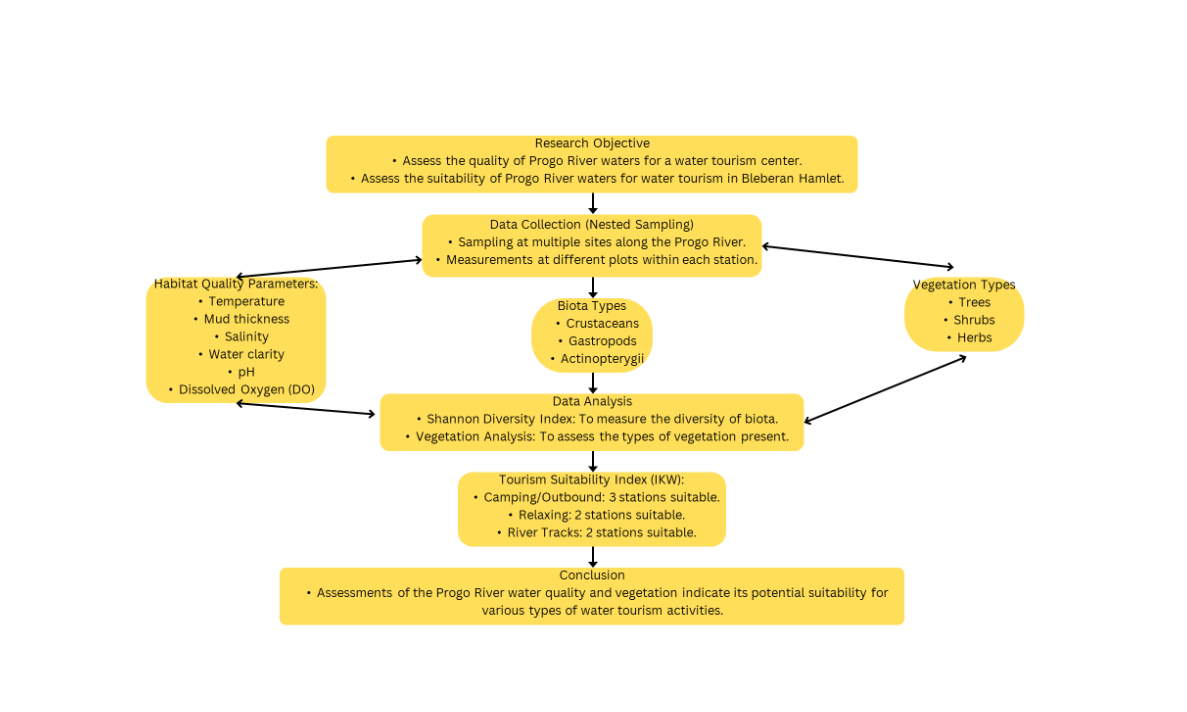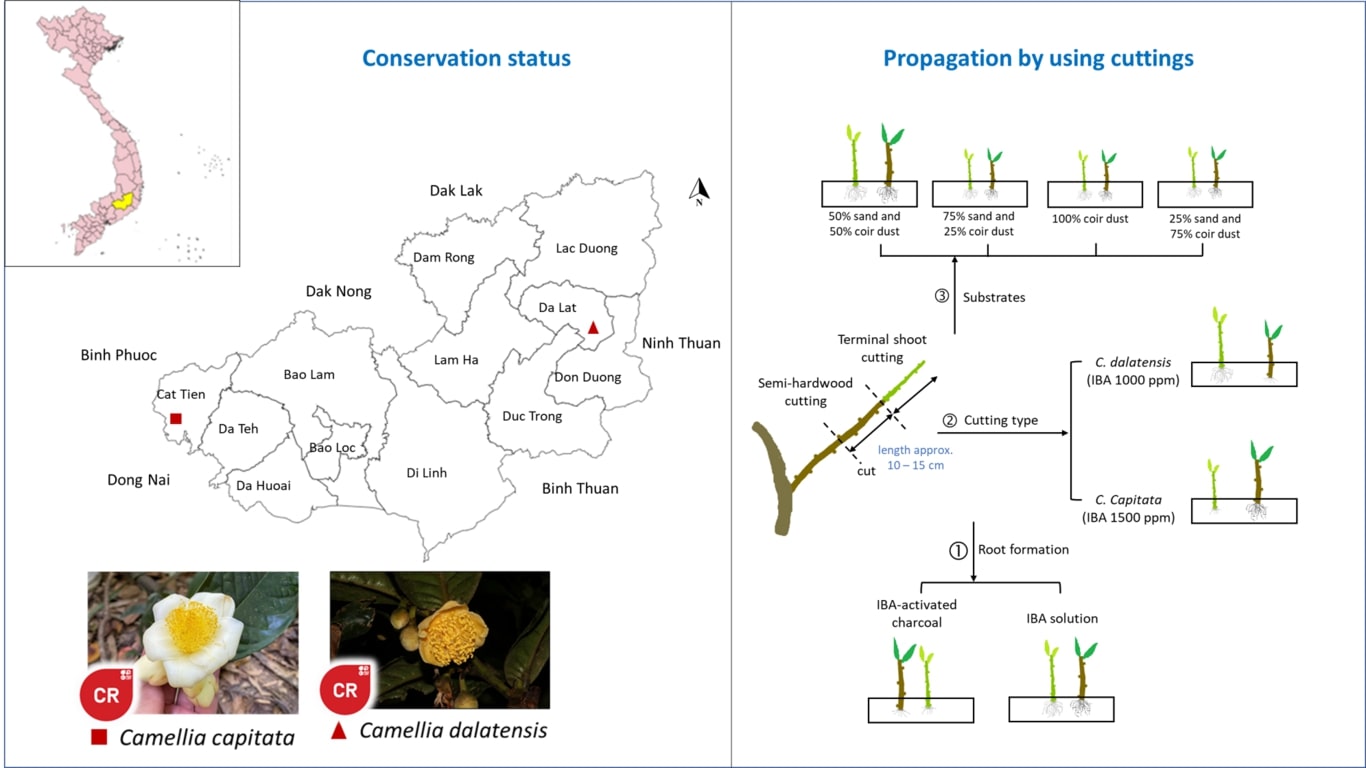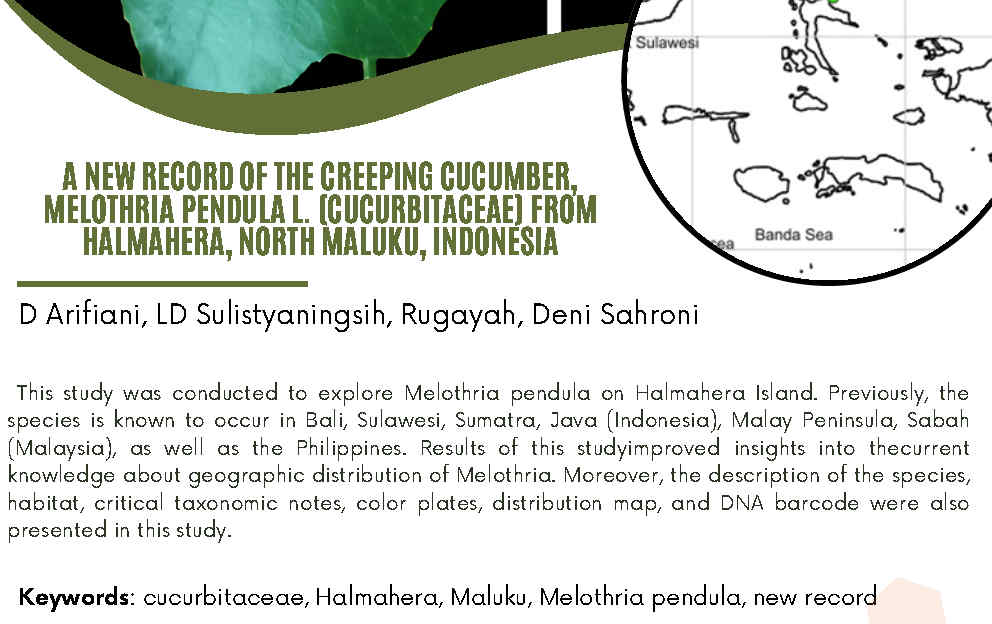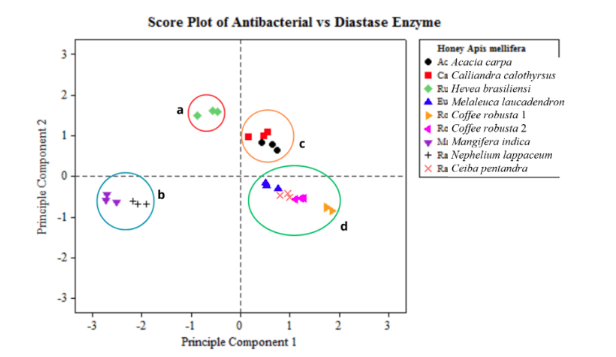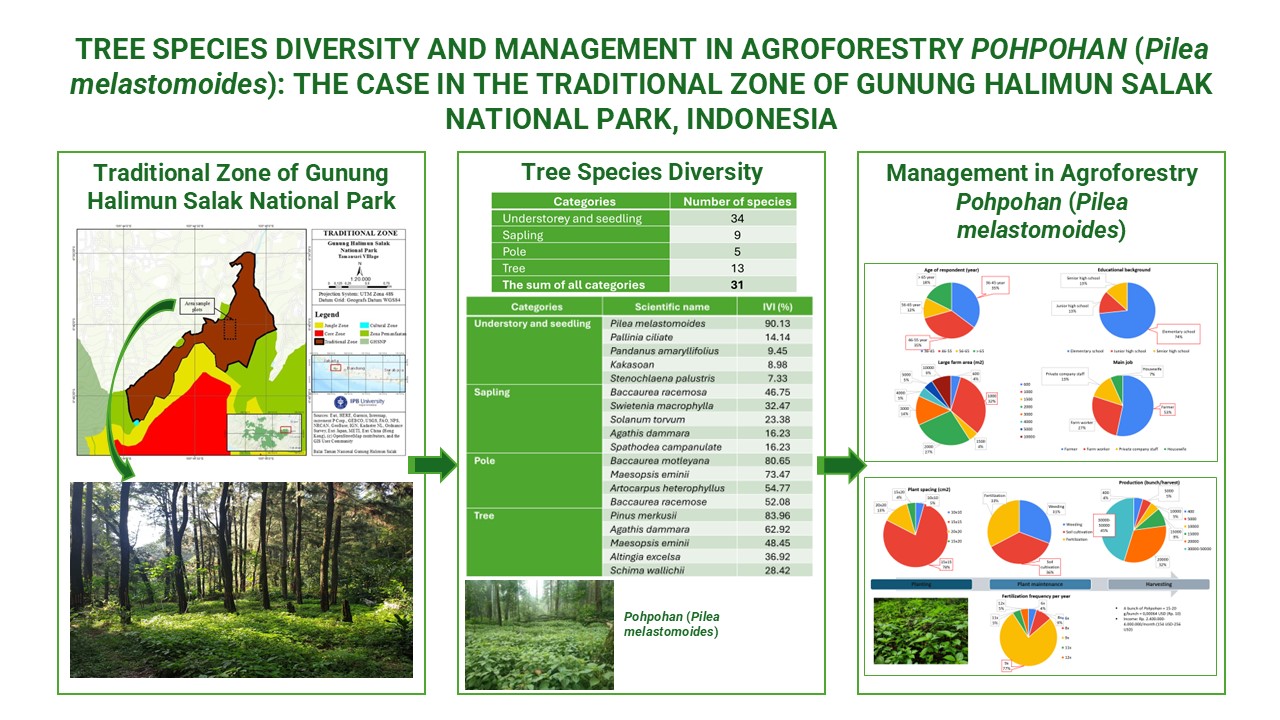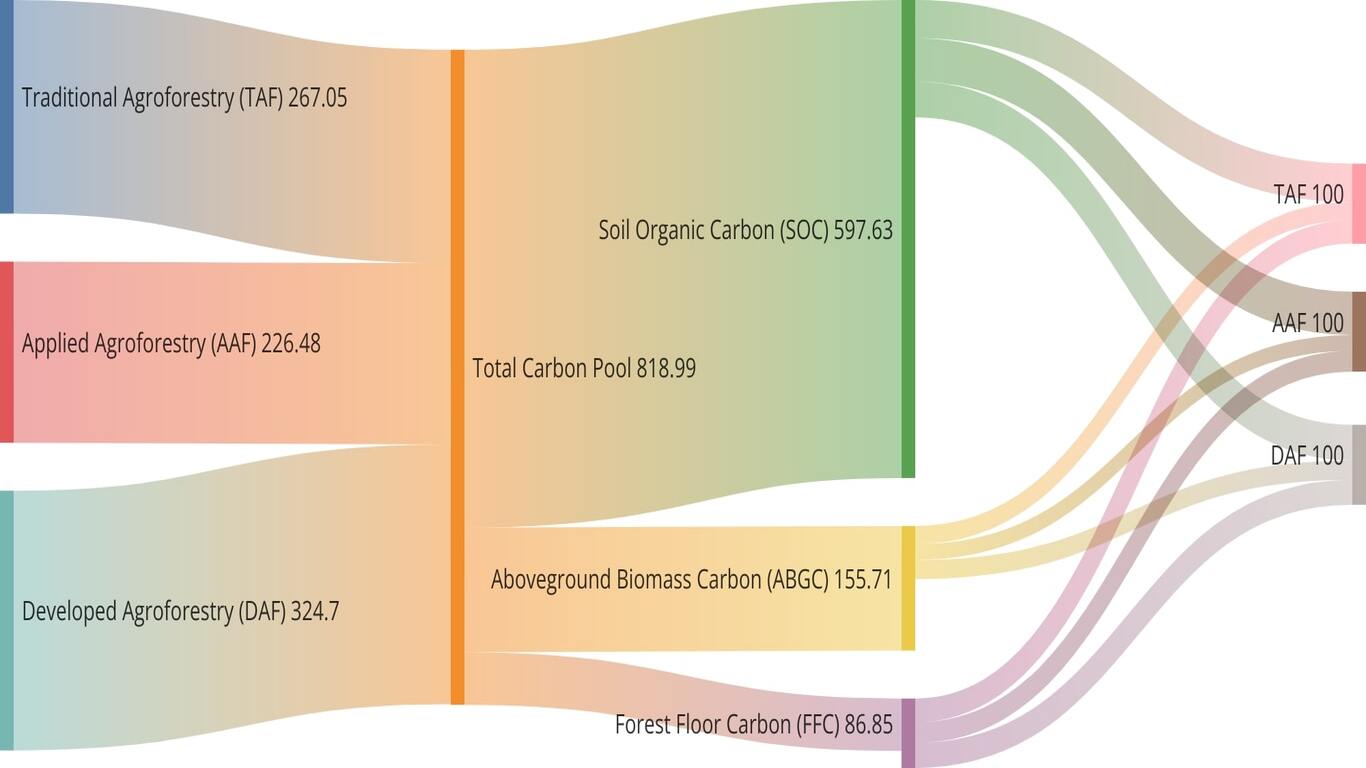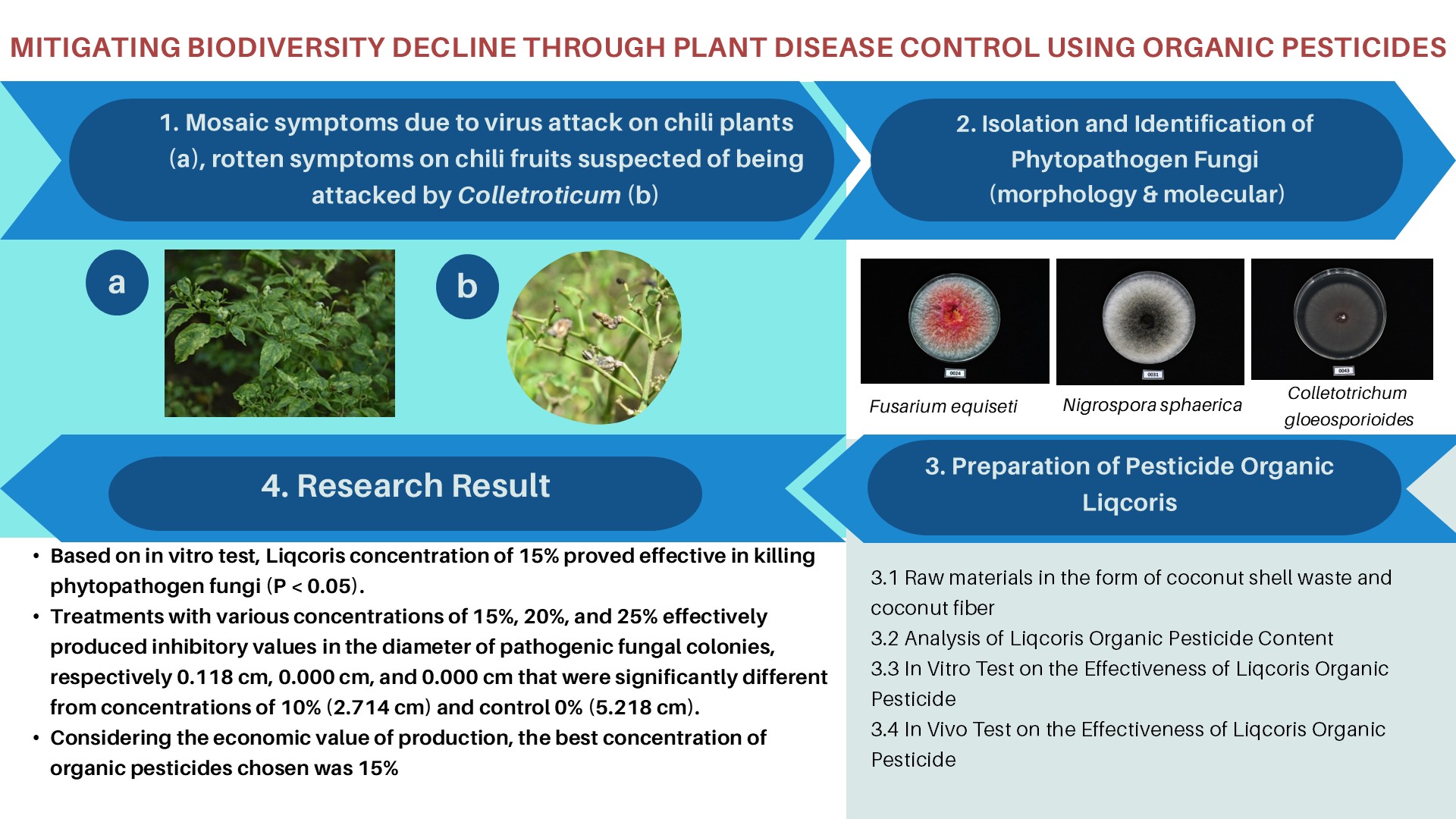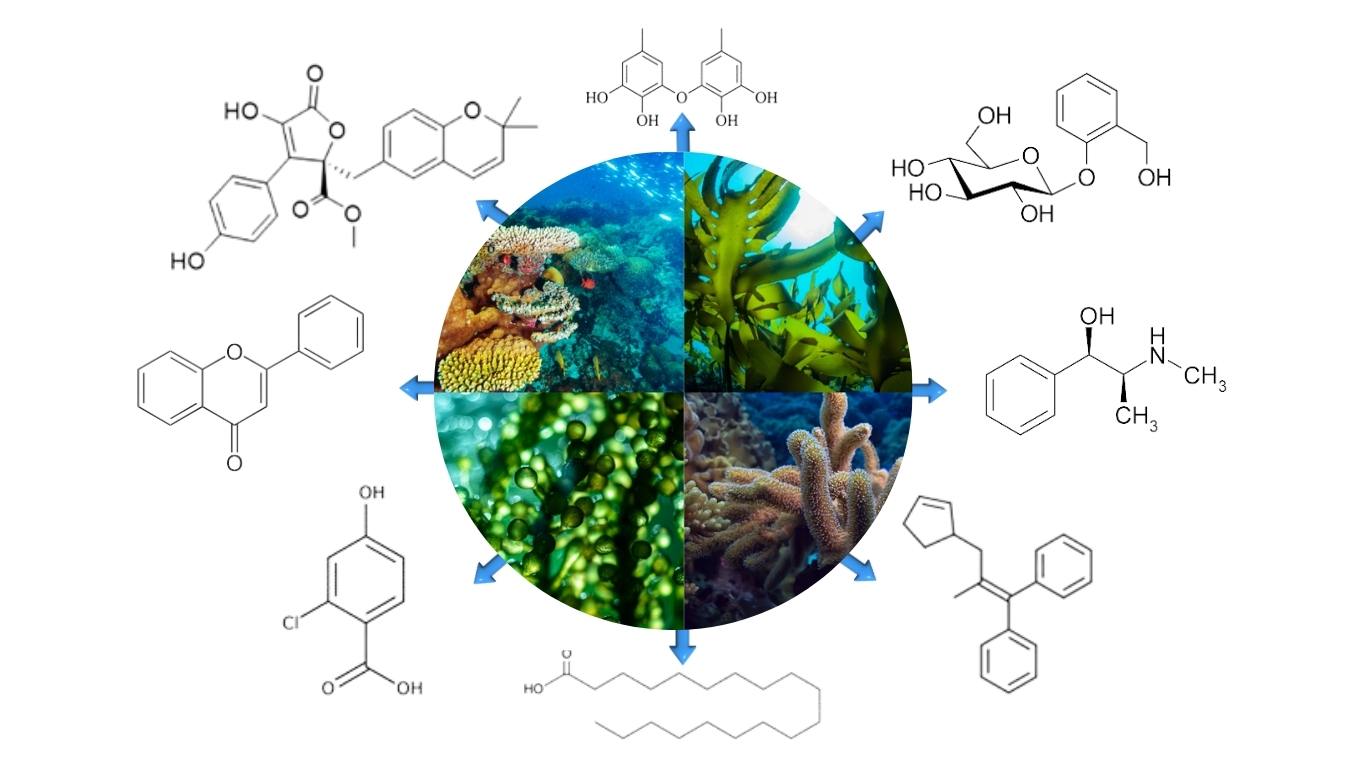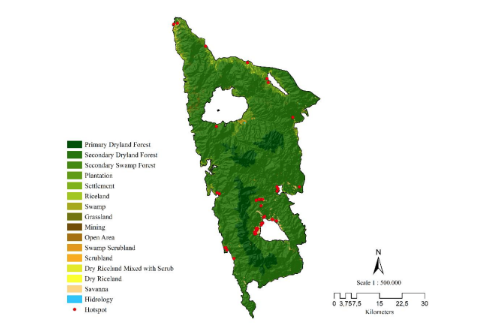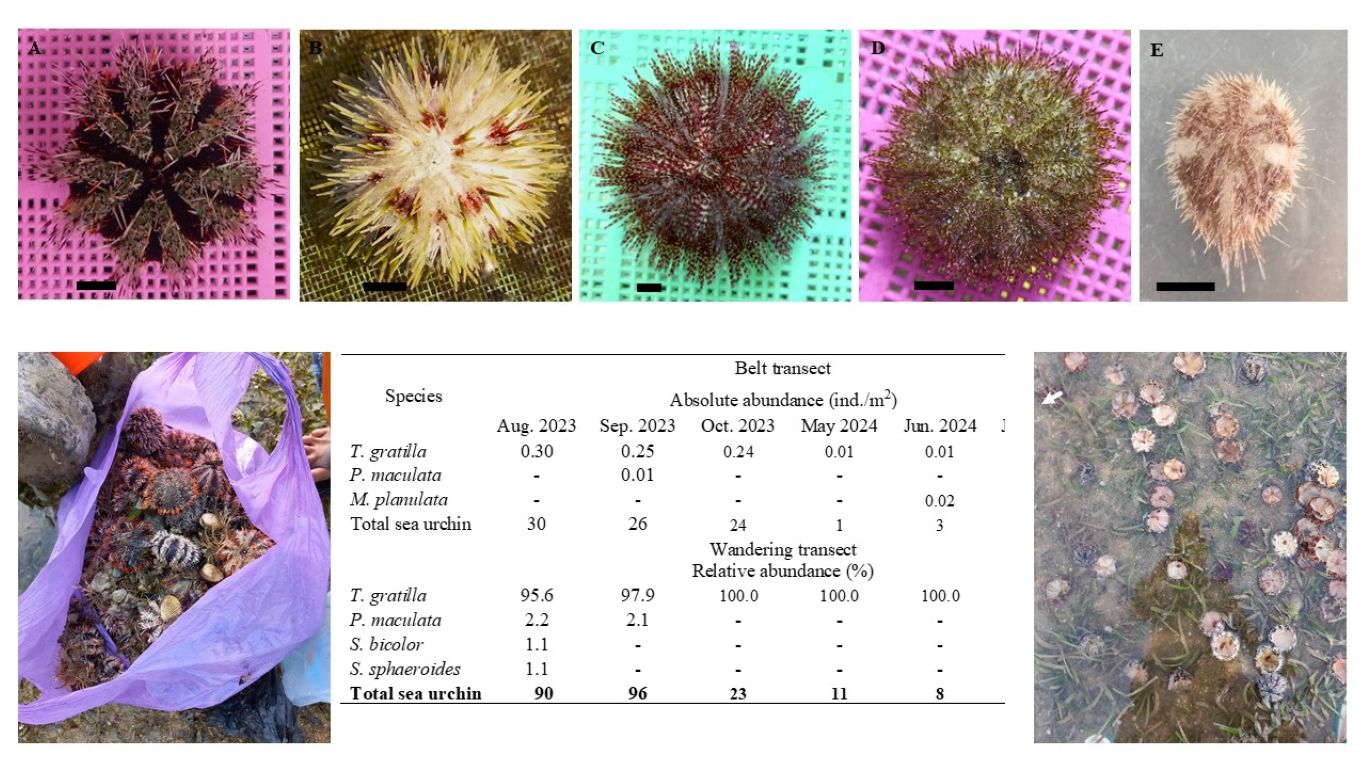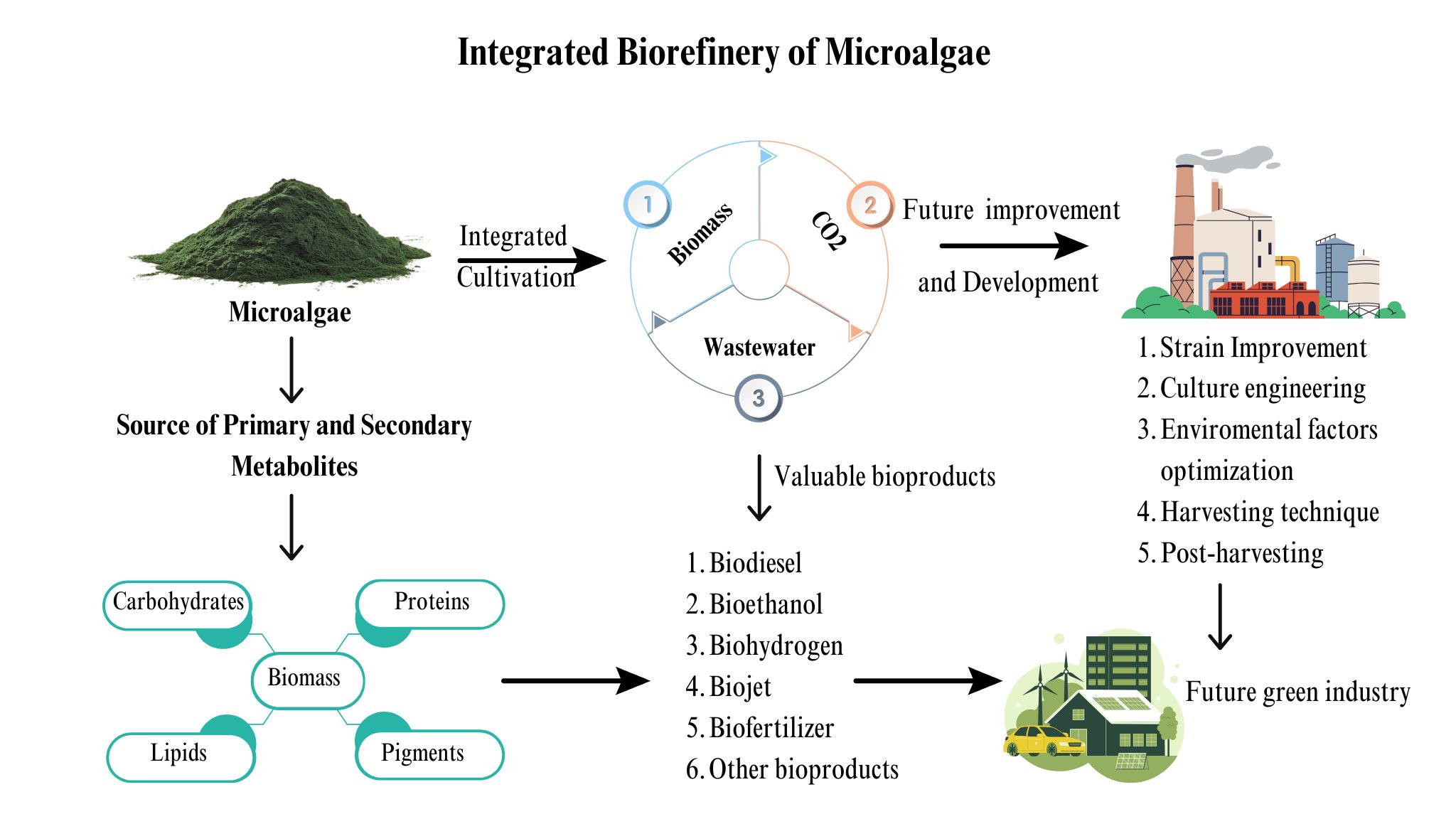DISTRIBUTION OF THE THALLOID LIVERWORT GENUS MARCHANTIA (MARCHANTIACEAE) IN NORTH SUMATRA, INDONESIA
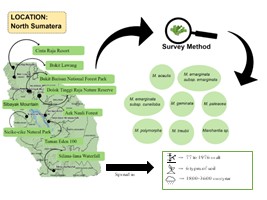
ARTICLE HIGLIGHTS
- The survey method was successful in identifying the species Marchantia and mapping their distribution in North Sumatra
- Eight taxa of Marchantia confirmed in North Sumatra, M. emarginata subsp. cuneiloba has the most widely distributed species.
- Species distribution linked to environmental factors like elevation, humidity, rainfall, soil types, slope, solar intensity, and types of land cover
ABSTRACT
Marchantia is one of the large genus complex thalloid liverworts (Marchantiophyta). The species of Marchantia has a wide distribution throughout the world, and occupies a variety of substrates. Studies on the presence and distribution of Marchantia species are still limited in North Sumatra. Therefore, the research was carried out to inventory the species of Marchantia and map their distribution in North Sumatra. Survey method was used to inventory the species of Marchantia, covering 9 locations, namely: Aek Nauli Forest, Bukit Barisan National Forest Park, Bukit Lawang, Resort Cinta Raja, Dolok Tinggi Raja Nature Reserve, Sibayak Mountain, Sicike-cike Natural Park, Silima-lima waterfall, and Taman Eden 100 Natural Park. Geographic Information System (GIS) was used to map the distribution of the species. The results showed that there were eight taxa of Marchantia confirmed in North Sumatra, namely, M. acaulis, M. emarginata subsp. emarginata, M. emarginata subsp. cuneiloba, M. geminata, M. paleacea subsp. paleacea, M. polymorpha, M. treubii, and Marchantia sp. The most widely distributed species of Marchantia is M. emarginata subsp. cuneiloba, found in 7 study locations. Species with the least distribution are M. treubii and Marchantia sp., each species found only in one location. Marchantia spp. in North Sumatra spread at an altitude of 77 to 1976 m alt, occupying habitats with 6 types of soil (orthic acrisol, humic andosol, humic acrisol, and humic cambisol), with rainfall of 1800-3600 mm/year. Marchantia species are found on sloping plains to steep, in various habitat, namely secondary forest, primary and secondary forest borders, dryland farming, primary and plantation borders, and plantations. The results of this study are important for the conservation of Marchantia spp. in North Sumatra considering the many benefits of the species.
Downloads
INTRODUCTION
The genus Marchantia is characterized by a dichotomously branched and dorsoventrally flattened thallus, bearing compound air pores, gemma cups, archegonium, and antheridium on the dorsal of thallus, along with ventral scales appendages on the ventral side. Marchantia is distinguished from all other genera of Marchantiaceae by bearing gemma cups on the dorsal thalli. The male and female thalli can reproduce asexually by producing multicellular ‘gemmae’ (singular: gemma) in ‘gemma cups’ (or ‘cupules’)(Shimamura, 2016). Gemma is the asexual reproduction, where each gemma grows into a new individual when supported by environmental conditions. Furthermore, gemmae are usually dispersed by rainwater, insects, and small mammals, such as mice(Barbé et al., 2017). Marchantia also has sexual reproduction organs in the form of archegonia (female) and antheridia (male), which are separated in different thalli (dioicous). However, species such as M. acaulis, show monoicous characteristics, where both archegonium and antheridium occur in the same thallus(Bischler-Causse, 1989);(Gradstein, 2011);(Siregar et al., 2013);(Linde et al., 2020)). This genus has oil bodies which can be usually observed in gemmae, appendage of the ventral scale of thallus, gemma cups or cupules, and involucre(Zheng & Shimamura, 2019);(Zheng & Shimamura, 2020);(Zheng & M, 2022).
Marchantia is composed of approximately 40 species globally(, 2016), and is represented by 19 accepted taxa in Asia(Bischler-Causse, 1989);(Xiang et al., 2016);(Long & Crandall-Stotler, 2020). This genus has a cosmopolitan distribution and the greatest diversity of species occurs in tropical Asia and Oceania. Marchantia is found in moist to wet habitats, open or shady places, side of the road, usually neutral or basic soils, sandy or clayey soils, on wet rocks, trench walls, riverside cliffs, waterfall cliffs, limestones, boulders in open or shaded places. Moreover, it is occasionally found on mineral soils in depressions or in the shade of fallen logs following hot forest fires. Marchantia frequently associates with human activity, rapidly colonizing in the open, burnt soil, and thriving in cultivated farmland. For example, species such as M. polymorpha commonly intrude into gardens, greenhouse, and areas around human settlements (land that has been disturbed by human activities)(Bischler-Causse et al., 2005);(Siregar et al., 2013);(Ho, 2013);(Shimamura, 2016);(Shimamura & Zheng, 2021)). Some of these species can be found below an altitude ranging from 100 m to 4,000 m above sea level, and are abundant at 1,000 to 2,500 m(Lu & Huang, 2017).
Marchantia has ecological roles as a pioneer plant on barren lands, preventing erosion by colonizing cliffs and forming dense populations(Sahu et al., 2014);(, 2017). Economically, Marchantia serves as a potential source of medicine due to the presence of antibacterial, antifungal, and antioxidant contents(, 2016);(Fatma, 2018);(Siregar et al., 2021);(Romani et al., 2022);(, 2022). This genus has also been used as a traditional medicine in China and India for treating various ailments, such as skin tumefaction, liver protection, hepatitis, tumors, ulcers, open wounds, burns, poisonous snake bites, hepatotoxicity, and as an antipyretic(Gupta et al., 2015); Purkon et al. 2022.
Despite the numerous benefits of Marchantia, only a few investigations focused on exploring its distribution in Indonesia, including in North Sumatra. Among the exploration reports are: (1)(Siregar et al., 2013)who reported seven species in Sibayak Forest; (2)(Siregar et al., 2020)who found the morphological variations of M. emarginata; and (3)(Siregar et al., 2021)who identified the antioxidant activity of M. paleacea. Therefore, this research aimed to investigate distribution of Marchantia species in North Sumatra.
MATERIALS AND METHODS
Research Area
The research was conducted in nine locations in North Sumatra Province, which has abundant existence of Marchantia. These locations were: (1) Aek Nauli Forest, Simalungun District; (2) Bukit Barisan National Forest Park, Karo District; (3) Bukit Lawang, Langkat District; (4) Resort Cinta Raja, Langkat District; (5) Dolok Tinggi Raja Nature Reserve, Simalungun District; (6) Sibayak Mountain, Karo, Deli Serdang District; (7) Sicike-cike Natural Park, Dairi District; 8) Silima-lima Waterfall, South Tapanuli District; and (9) Taman Eden 100 Natural Park, Toba Samosir District, as shown inFigure 1.
Data Collection
An exploratory survey was carried out along the path at each predetermined location. Species that have been recognized in previous research were only photographed and not collected for analysis. However, unknown or doubtful species were photographed, collected, and placed in a ziplock bag containing water-moistened tissue paper. These species were taken to Herbarium Medanense (MEDA), Biology Department, Faculty of Mathematics and Sciences, Universitas Sumatera Utara Medan, Indonesia for identification. The ordinal point of global positioning system (GPS) was recorded and physical factors were measured at each location, including altitude, humidity, soil pH, air temperature, and light intensity. Data on Marchantia spp. that were previously collected from North Sumatra and stored in the MEDA herbarium were also used in this research.
Data Analysis
Morphological observations were carried out at the Plant Systematics Laboratory, Department of Biology, Faculty of Mathematics and Natural Sciences, Universitas Sumatera Utara, Medan, Indonesia. Species identification was based on various available literatures, particularly(Bischler-Causse, 1989),(Singh & Singh, 2013),(Siregar et al., 2013),(Lu & Huang, 2017), and(Zheng & M, 2022). Validation of the scientific names was based on the Tropicos website: https://www.tropicos.org/home. Data on distribution
Barbé M, Chavel EE, Fenton NJ, Imbeau L, Mazerolle MJ, Drapeau P, Bergero Y. 2017. Dispersal of bryophytes and ferns is facilitated by small mammals in the boreal forest. Écoscience 23:67-76. DOI: https://doi.org/10.1080/11956860.2016.1235917
Bischler-Causse H. 1989. Marchantia L. The Asiatic and Oceanic taxa. Bryophyt Biblioth 38:1-317.
Bischler-Causse L, Gradstein SR, Jovet-Ast S, Long DG, Allen NS. 2005. Flora Neotropica Monoghraph: Marchantiidae 97:1-262. New York (US): New York Botanical Garden Press.
Borovichev EA, Bakalin VA. 2014. A Survey of Marchantiales from the Russian Far East II. Note on Marchantia paleacea Bertol. Arctoa 23(1):25-8. DOI: 10.15298/arctoa.23.04. DOI: https://doi.org/10.15298/arctoa.23.04
Bowman JL. 2015. A Brief History of Marchantia from Greece to Genomics. Plant Cell Physiology pii: pcv044.http://dx.doi.org/10.1093/pcp/pcv044. DOI: https://doi.org/10.1093/pcp/pcv044
Bowman JL, Kohchi T, Yamato KT, Jenkins J, Shu S, Yamaoka S, …, Schmutz J. 2017. Insights into Land Plant Evolution Garnered from the Marchantia polymorpha Genome. Cell 171:287-304. DOI: https://doi.org/10.1016/j.cell.2017.09.030
Cykowska S. 2011. First Discovery of Marchantia polymorpha subsp. polymorpha (Marchantiophyta, Marchantiaceae) in the Polish Tatra.
Fatma FN. 2018. Isolasi Metabolit Sekunder Isolat MEC 2 dari Kapang Endofit Lumut Hati Marchantia emarginata Reinw., Blume and Nees. [Thesis]. Fakultas Ilmu Kesehatan UIN Syarif Hidayatullah Jakarta.
Food and Agriculture Organization. 2014. World references base for soil resources Reports 2014. International soil classification system for naming soils and creating legends for soil. Rome (IT): Food and Agriculture Organization of the United Nations. 203 pp.
Gradstein SR. 2011. Guide to the Liverworts and Hornworts of Java. Bogor (ID): SEAMEO BIOTROP.
Gupta SK, Sharma A, Moktan S. 2015. A Review on Some Species of Marchantia with Reference to Distribution, Characterization and Importance. World J Pharm Sci 4(4):1576-88.
Ho BC. 2013. The Liverwort Genus Marchantia L. (Marchantiophyta: Marchantiopsida) in Singapore, with a New Species Record. Nat Singapore 6:187-90.
Linde AM, Sawangproh W, Cronberg N, Szövényi P, Lagercrantz U. 2020. Evolutionary History of the Marchantia polymorpha Complex. Front Plant Sci 11:829. DOI: 10.3389/fpls.2020.00829. DOI: https://doi.org/10.3389/fpls.2020.00829
Long DG, Crandall-Stotler BJ. 2020. Marchantia platycarpa (Marchantiopsida, Marchantiaceae), A New Species from China. Nova Hedwigia Beihefte 150:109-16. DOI: https://doi.org/10.1127/nova-suppl/2020/109
Lu YW, Huang SF. 2017. Marchantia L. (Marchantiaceae-Marchantiophyta) in Taiwan. Taiwania 62(1):55-62. DOI: 10.6165/tai.2017.62.55. DOI: https://doi.org/10.25291/VR/55-VR-62
Romani F, Flores JR, Ignacio Tolopka J, Suarez G, He X, Moreno JE. 2022. Liverwort Oil Bodies: Diversity, Biochemistry, and Molecular Cell Biology of the Earliest Secretory Structure of Land Plants. J Exp Bot 73:4427-39. DOI: https://doi.org/10.1093/jxb/erac134
Sahu V, Nath V, Asthana AK, Yunus M. 2014. Marchantia paleacea Bertol. as Quantitative Biomonitor of Atmospheric Heavy Metals Deposition. J Recent Adv Appl Sci 29:22-7.
Shimamura M. 2016. Marchantia polymorpha: Taxonomy, Phylogeny and Morphology of a Model System. Plant Cell Physiol 57(2):230-56. DOI: 10.1093/pcp/pcv192. DOI: https://doi.org/10.1093/pcp/pcv192
Shimamura M, Zheng TX. 2021. Discovery of Male Plants of Marchantia polymorpha subsp. polymorpha in Japan. Hikobia 18:105-7.
Singh D, Singh DK. 2013. An Appraisal of the Genus Marchantia in India with a Note on Marchantia emarginata subspecies emarginata in Indian Himalayan Region. Proc. Natl. Acad. Sci. India Sect. B - Biol Sci 83(1):15-26. DOI: 10.1007/s40011- 012-0065-6. DOI: https://doi.org/10.1007/s40011-012-0065-6
Siregar ES, Ariyanti NS, Tjitrosoedirdjo SS. 2013. The Liverwort Genus Marchantia (Marchantiaceae) of Mount Sibayak North Sumatra, Indonesia. BIOTROPIA 20:73-80. DOI: 10.11598/btb.2013.20.2.3. DOI: https://doi.org/10.11598/btb.2013.20.2.327
Siregar ES, Pasaribu N, Sofyan MZ. 2020. Morphological Study on Marchantia emarginata Reinw, Blume et Nees in North Sumatra Indonesia. In ICOSTEERR 2018. Proceeding International Conference of Science, Technology, Engineering, Environmental and Ramification Researches- Research in Industri 4.0. p.1073-5. DOI: https://doi.org/10.5220/0010101810731075
Siregar ES, Pasaribu N, Sofyan MZ. 2021. Antioxidant activity of liverworts Marchantia paleacea Bertol. from North Sumatra Indonesia. In ICONART 2020. Proceedings: 2021 April 12; IOP Conf. Ser: Earth Environ. Sci. 713 012061; North Sumatra Indonesia: The 2nd International Conference on Natural Resources and Technology 2020, August. p.1-7. DOI: https://doi.org/10.1088/1755-1315/713/1/012061
Söderström L, Hagborg A, von Konrat M, Bartholomew-Beganet S, Bell D, Briscoe L, …, Zhu RL. 2016. World checklist of hornworts and liverworts. PhytoKeys 59:1-828. DOI: https://doi.org/10.3897/phytokeys.59.6261
Tanaka M, Esaki T, Kenmoku H, Koeduka T, Kiyoyama Y, Masujima T, …, Matsui K. 2016. Direct evidence of specific localization of sesquiterpenes and marchantin A in oil body cells of Marchantia polymorpha L. Phytochemistry 130:77-84. DOI: https://doi.org/10.1016/j.phytochem.2016.06.008
Xiang YL, Shu L, Zhu RL. 2016. Marchantia longii (Marchantiaceae), a new species from northwestern Yunnan, China. Bryologist 119(3):280-9. DOI: 10.1639/0007-2745-119.3.280. DOI: https://doi.org/10.1639/0007-2745-119.3.280
Zhang JZ, Wang C, Zhu TT, Fu J, Tan H, Zhang CM, …, Lou HX. 2022. Spatial Distribution, Antioxidant Capacity, and Spore Germination-Promoting Effect of Bibenzyls from Marchantia polymorpha. Antioxidants 11(11):2157. DOI: 10.3390/antiox11112157. DOI: https://doi.org/10.3390/antiox11112157
Zheng TX, Shimamura M. 2019a. The gemma of Marc.hantia pinnata (Marchantiaceae, Marchantiophyta). Bryol Res 12:1–5.
Zheng TX, Shimamura M. 2019b. Morphological discrimination of the two subspecies of Marchantia paleacea Bertol. (Marchantiaceae, Marchantiophyta) and their geographical distribution patterns in Japan. Hikobia 18:65-9
Zheng TX, Shimamura M. 2020. A new locality of Marchantia polymorpha L. subsp. polymorpha. From Miyagi Prefecture, Japan. Hikobia 18:61-3.
Zheng,TX, Shimamura M. 2022. Taxonomic revision of the genus Marchantia (Marchantiaceae) in Japan and the redefinition of the genus. Hattoria 13 (1784):33-77. DOI: 10.18968/hattoria.13.0_33.
Zheng TX. 2023. Oil cells in the side walls of air chambers, a new taxonomic character in the family Marchantiaceae. The Bryologist 126(2) :174-9. DOI: 10.1639/0007-2745-126.2.17 DOI: https://doi.org/10.1639/0007-2745-126.2.174
Copyright (c) 2024 etti sartina siregar

This work is licensed under a Creative Commons Attribution-NonCommercial-NoDerivatives 4.0 International License.
Authors who publish with this journal agree with the following terms:
- Authors retain copyright and grant the journal right of first publication, with the work 1 year after publication simultaneously licensed under a Creative Commons attribution-noncommerical-noderivates 4.0 International License that allows others to share, copy and redistribute the work in any medium or format, but only where the use is for non-commercial purposes and an acknowledgement of the work's authorship and initial publication in this journal is mentioned.
- Authors are able to enter into separate, additional contractual arrangements for the non-exclusive distribution of the journal's published version of the work (e.g., post it to an institutional repository or publish it in a book), with an acknowledgement of its initial publication in this journal.
- Authors are permitted and encouraged to post their work online (e.g., in institutional repositories or on their website) prior to and during the submission process, as it can lead to productive exchanges, as well as earlier and greater citation of published work (See The Effect of Open Access).

